Six native critters you can watch live online
Streaming video allows for glimpse into lives of species from around the Bay region
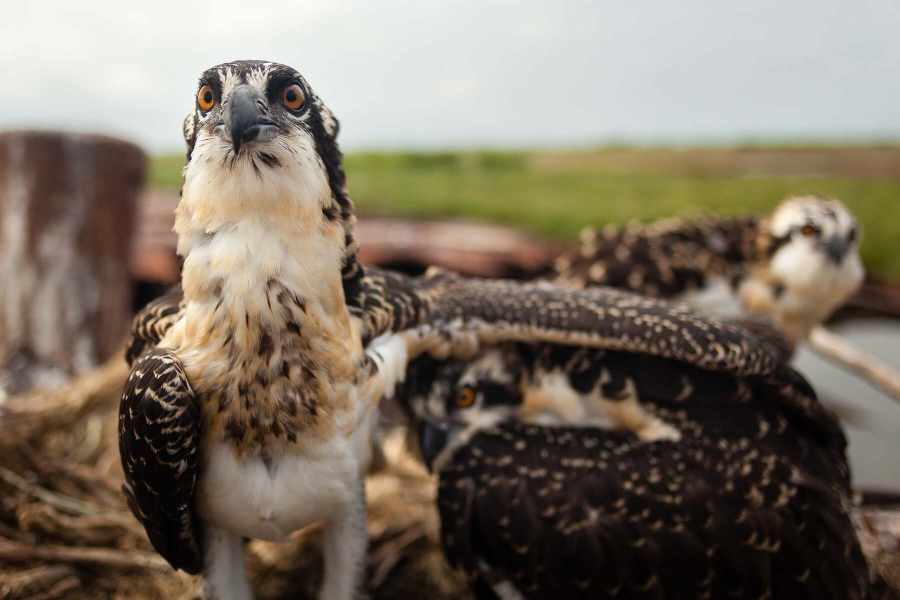
After a long, cold winter, spring’s arrival brings a vibrancy of life to the Chesapeake Bay region: critters are awakening from hibernation, birds and fish are migrating back to the area and countless animals are starting to raise their young.
For most of us, it would be difficult to see these critters in the wild. But a growing number of wildlife cameras are allowing us to get a glimpse into the lives of animals native to the region, from bald eagles to black bears. We’ve compiled a list of just a few of the types of critters you can watch.
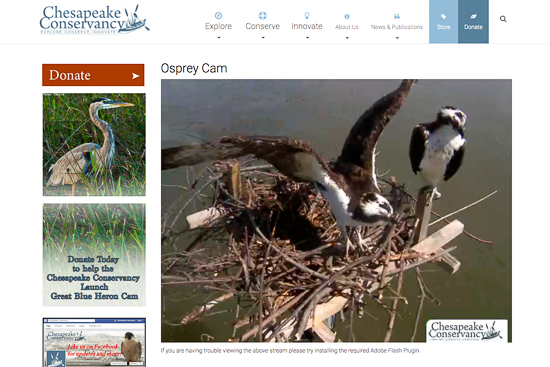
1. Osprey
Also known as the fish hawk, the osprey is an unofficial sign of spring for the Bay region. The birds begin arrive to the Bay in early March and remain through the spring and summer. Since 2009, the Chesapeake Conservancy has been streaming live video of a platform on Kent Island, where “Tom” and “Audrey”—a pair of ospreys—build their nest each year.
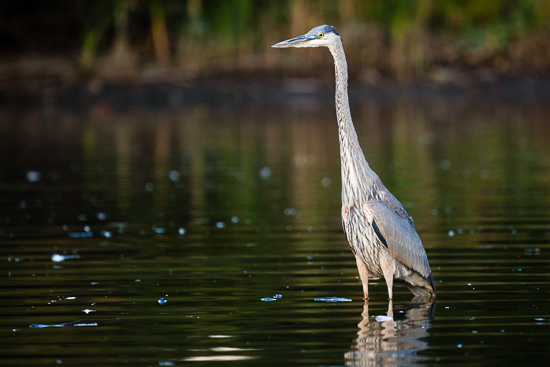
2. Great Blue Heron
This tall, blue-gray wading bird can be found year-round throughout the Chesapeake Bay region. Herons nest and breed in colonies—called “rookeries”—high in the treetops of isolated areas. With the help of the Chesapeake Conservancy, a camera was installed near the top of a 100-foot loblolly pine tree on Maryland’s Eastern Shore. Live video of the rookery shows activity from multiple nests.
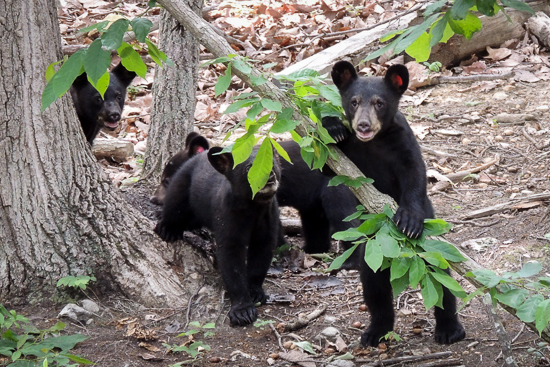
3. American Black Bear
One of the most common bears in North America, the American black bear can be found throughout the Chesapeake Bay watershed. In 2015, the Wildlife Center of Virginia rescued seven bear cubs who were separated from their mothers and possibly orphaned. Today, the Wildlife Center runs a wildlife camera showing the bear yearlings. But get your viewing in soon! The organization expects the bears will be ready for release in mid-April 2016.
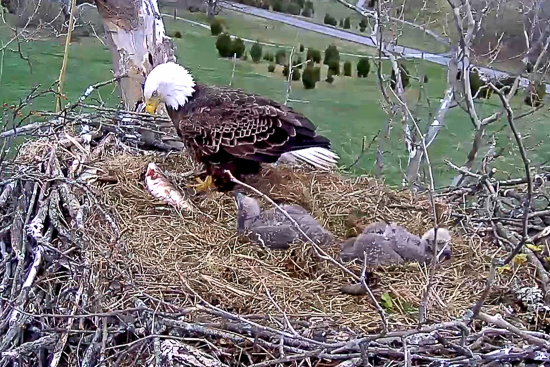
4. Bald Eagle
Many of these iconic birds can be found year-round throughout the Bay region, but the area is also an important stop for eagles migrating from other parts of North America. One pair of the raptors, “Mr. President” and “The First Lady,” can be seen raising two fledglings at the U.S. National Arboretum in Washington, D.C. A live stream from the National Conservation Training Center in Shepherdstown, West Virginia, shows another pair of eagles (nicked named “Belle” and “Shep” by fans) caring for their eaglets.
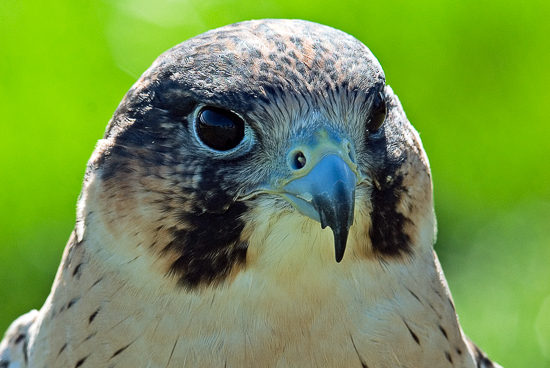
5. Peregrine Falcon
Widespread pesticide use in the 1940s, ‘50s and ‘60s led to a drastic decline in the number of peregrine falcons: by 1975, only 324 known pairs of the raptors were nesting in North America. But a robust recovery allowed the birds to be removed from the Endangered Species List in 1999, and the Chesapeake Bay has again become an important region for nesting and migrating peregrine falcons. Watch the Chesapeake Conservancy’s falcon camera to see “Boh” and “Barb” nesting on a skyscraper in Baltimore’s Inner Harbor; tune in to the Virginia Department of Game & Inland Fisheries’ falcon webcam to watch a pair of peregrines nesting in downtown Richmond, Virginia; or check out the Pennsylvania Department of Environmental Protection’s falcon cam to watch a nest in downtown Harrisburg, Pennsylvania.
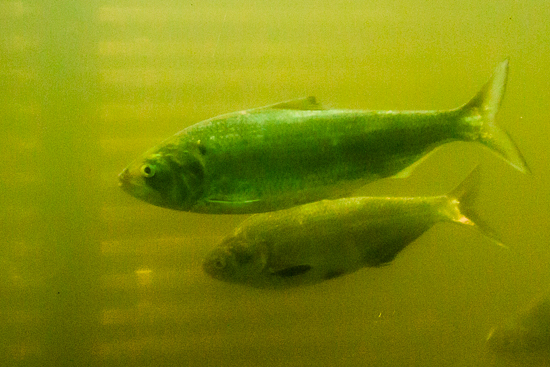
6. American Shad
Birds and bears aren’t the only types of critters you can watch online: the Virginia Department of Game & Inland Fisheries runs a shad cam at Bosher Dam along the James River. Beginning in late March, you can catch a glimpse of American shad and other fish as they travel upstream to spawn.
Have a favorite wildlife camera you love to watch? Let us know in the comments!

Comments
I love the cams at WCV! Especially the black bear critter cams!
Thank you!
Your comment has been received. Before it can be published, the comment will be reviewed by our team to ensure it adheres with our rules of engagement.
Back to recent stories